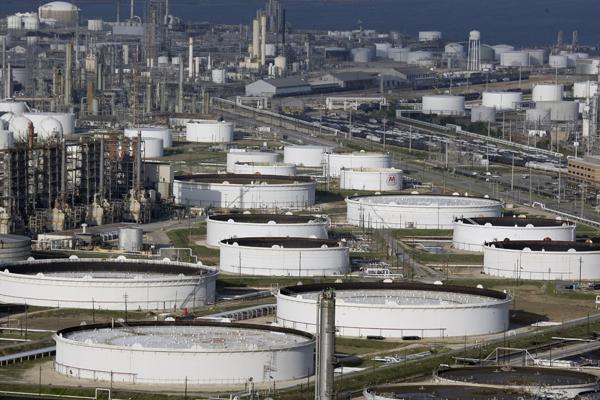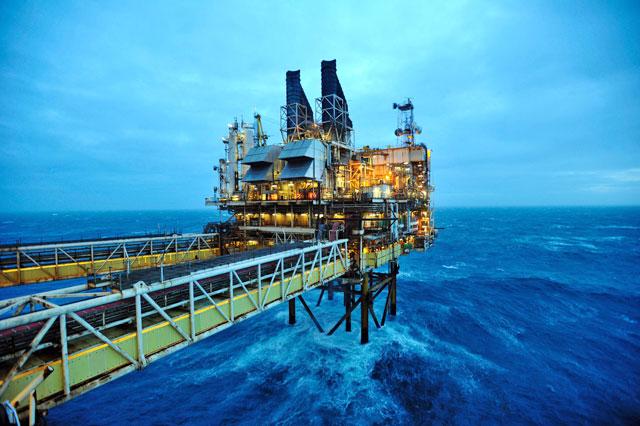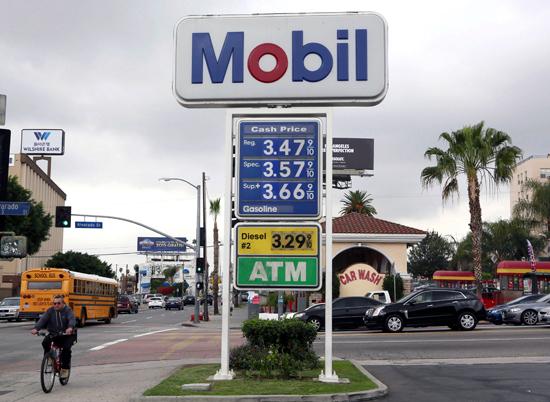You are here
Oil, gas investments likely to fall to $522b in 2016
By Agencies - Jan 04,2016 - Last updated at Jan 04,2016

This September 11, 2008 file photo shows Marathon Oil's refinery in Texas City, Texas (AP photo by David J. Phillip)
LONDON — With crude prices at 11-year lows, the world's biggest oil and gas producers are facing their longest period of investment cuts in decades, but are expected to borrow more to preserve the dividends demanded by investors.
At around $37 a barrel, crude prices are well below the $60 firms such as Total, Statoil and BP need to balance their books, a level that has already been sharply reduced over the past 18 months.
International oil companies are once again being forced to cut spending, sell assets, shed jobs and delay projects as the oil slump shows no sign of recovery.
US producers Chevron and ConocoPhillips have published plans to slash their 2016 budgets by a quarter. Royal Dutch Shell has also announced a further $5 billion in spending cuts if its planned takeover of BG Group goes ahead.
Global oil and gas investments are expected to fall to their lowest in six years in 2016 to $522 billion, following a 22 per cent fall to $595 billion in 2015, according to the Oslo-based consultancy Rystad Energy.
"This will be the first time since the 1986 oil price downturn that we see two consecutive years of a decline in investments," Bjoernar Tonhaugen, vice president of oil and gas markets at Rystad Energy, told Reuters.
The activities that survive will be those that offer the best returns.
But with the sector's debt to equity ratio at a relatively low level of around 20 per cent or below, industry sources say companies will take on even more borrowing to cover the shortfall in revenue in order to protect the level of dividend payouts.
Shell has not cut its dividend since 1945, a tradition its present management is not keen to break. The rest of the sector is also averse to reducing payouts to shareholders, which include the world's biggest investment and pension funds, for fear investors might take flight.
ExxonMobil and Chevron benefit from the lowest debt ratios among the oil majors while Statoil and Repsol have the highest debt burden, according to Jefferies analyst Jason Gammel.
Few large decisions
With only a handful of major projects approved in 2015, including Shell's Appomattox development in the Gulf of Mexico and Statoil's giant $29 billion Johan Sverdrup field in the North Sea, 2016 is also likely to see few large investment decisions.
Projects that could be green-lit include BP's Mad Dog Phase 2 in the Gulf of Mexico, which the company now expects to cost less than $10 billion, around half the original estimate, and Chevron's expansion of the Tengiz project in Kazakhstan, according to Gammel.
Industry-wide, costs will be cut by reducing the size of projects, renegotiating supply contracts and using less complex technology.
After rapidly expanding in the first half of the decade when oil prices were above $100 a barrel, companies are now expected to focus on the most profitable activities, said Brendan Warn, oil and gas equity analyst at BMO Capital Markets.
"Companies want to reduce their range of activity and pick those with the highest returns on capital," Warn indicated.
Shell, which plans to complete its $54 billion acquisition of BG in February, intends to focus on the attractive liquefied natural gas (LNG) market and on deep water oil production, especially in Brazil, both areas in which BG is a leader.
With similar priorities in mind, BP is increasingly focused on the Gulf of Mexico and Egypt, where it approved a $12 billion development in 2015.
While tens of thousands of jobs have already been cut in 2015, more redundancies are expected this year as companies narrow their focus, Warn said.
On top of reducing spending by scrapping and delaying projects, oil majors will see costs come down as contractors agree to further price reductions.
For example, the annual cost of hiring a drilling ship fell to an average of $332,000 in 2015, compared with $405,000 in 2014, according to Rigzone, which collects industry data.
The drop in investment bodes badly for services and contractor companies, which are seeing their work dry up.
Hold your nerve
But with fewer projects approved, fewer fields developed and less maintenance work undertaken, companies are putting their growth at risk.
"You've got to hold your nerve. If you cut too deeply, it is very, very difficult to take advantage of the price rebound when it comes," a senior official at a European oil major told Reuters.
Tumbling oil prices have cut billions of dollars from oil companies' revenue streams, although strong profits from refining have softened the blow for most.
And while their in-house oil and gas production growth comes under pressure, companies might opt to acquire rivals with less resilient balance sheets, as with Shell's proposed acquisition of BG.
"In the second half of 2016, if we see price stabilisation, I expect companies will be looking to replace reserves inorganically, by making acquisitions," Warn said.
Separately, Chief Executive Bob Dudley warned Saturday that struggling oil producers could suffer even more pain in 2016 with further plunges in already record-low prices.
"A low point could be in the first quarter," Dudley told BBC radio.
Oil prices fell by 34 per cent in 2015, battered by prolonged global oversupply and a slowdown in energy-hungry China's economy.
Dudley predicted that prices could stabilise towards the end of the year, but would remain low for the forseeable future.
"Prices are going to stay lower for longer, we have said it and I think we are in this for a couple of years. For sure, there is a boom-and-bust cycle here," Dudley indicated.
Prices have particularly slumped since December 4 when the Organisation of the Petroleum Exporting Countries (OPEC) decided against limiting production as members fight to keep market share.
Potentially adding to the supply worries was action by the US Congress last month to end the 40-year-old ban on exports of crude oil produced in the country.
In a related development, data showed that Russia pumped a record 534 million tonnes of crude oil in 2015 even as it reeled from a fall in oil prices caused by a supply glut.
The country's oil and gas condensate production last year increased 1.4 per cent year-on-year, with output reaching 10.73 million barrels per day, a post-Soviet record, according to data cited by Interfax news agency.
The slide in oil prices and Western sanctions over Moscow's role in the Ukraine crisis have pummelled the oil-dependent Russian economy in recent months
The ruble lost around half of its value in 2014 but recovered slightly as energy prices stabilised last year.
But the recent renewed slump in oil prices, with Brent crude falling to an 11-year low last month, casts a shadow on the prospect of economic recovery.
"All states, including OPEC countries, have concentrated on increasing their output and turning out as much oil as possible not to lose their market niches, not taking note that they are driving prices down," energy consultant Mikhail Krutikhin said Saturday on Russian radio. "It appears that Russia is also following this path."
Russia's central bank predicted that if oil prices remain at their current level, gross domestic product could shrink 2 per cent in 2016.
President Vladimir Putin assured at his annual press conference last month that the country was prepared for any economic situation, despite the volatility in oil prices.
Russia's 2016 budget had been calculated on the basis of an oil price of $50 per barrel, a figure Putin said was an "optimistic" assessment of the situation, with the price now hovering around $37.
Related Articles
LONDON — BP returned to profit in 2016 as cost-cutting and lower charges linked to the Gulf of Mexico oil spill offset weaker crude prices,
NEW YORK — US oil giants Chevron and ExxonMobil have signalled further belt-tightening ahead as the industry responds to lower oil prices th
Global oil and gas exploration projects worth more than $150 billion are likely to be put on hold next year as plunging oil prices render them uneconomic, data show, potentially curbing supplies by the end of the decade.


















